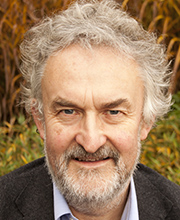Professor Martin Bell

Currently on research leave.
Areas of interest
- Environmental change
- The prehistory of soil erosion
- Experimental archaeology.
Postgraduate supervision
Martin currently supervises the following postgraduate student projects:
- Archaeological Palaeoenvironmental Archives: challenges and potential
- Mesolithic Artefacts and Use Wear in Wetlands
- Fire in the Lower Palaeolithic: Absence of evidence or evidence of absence?
- The role of sarsen stone in southern Britain. An archaeological and ethno-historical approach to an ancient industry.
Previous topics have included:
- Prehistoric avian, mammalian and H sapiens footprint-tracks from intertidal sediments as evidence of human palaeoecology
- In situ preservation
- Mollusc middens in Morocco
- Wooduse
- Experimental archaeology of soils and sediments
- Mesolithic riverine archaeology.
Martin is keen to discuss proposals for postgraduate research in geoarchaeology, prehistoric coastal archaeology, snail analysis in archaeology and experimental archaeology (particularly formation processes and the role of science in heritage outreach sites).
For further information, please contact m.g.bell@reading.ac.uk
Teaching
Martin teaches environmental archaeology, geoarchaeology, and coastal and maritime archaeology.
Research centres and groups
Research projects
Martin's research concerns the contribution which archaeology makes to an understanding of environmental change on a wide range of timescales. Analytically he is interested in the analysis of soils, sediments and molluscs, land and marine. Topics include the prehistory of soil erosion, experimental archaeology and particularly coastal environments. Coastal research has focused on an extensive programme of fieldwork and excavations in the Severn Estuary where he has been working since 1983. This has particularly involved major excavations at Brean Down, Goldcliff and Redwick. Discoveries at these sites include several Mesolithic settlements and human and animal footprints, and many Bronze Age and Iron Age buildings and wood structures such as trackways and fish traps.
Current fieldwork projects include the Peterstone palaeochannels project in the Severn Estuary (with Dr Alex Brown), investigations at various experimental archaeology sites including Butser Ancient Farm and St Fagans, National History Museum Wales, as part of the Developing Experimental Approaches in Archaeology Project. He is also involved in a project on in situ monitoring of wetland sites in the Somerset Levels and a cave excavation at Taforalt, Morocco (with Professor Nick Barton, Oxford).
His publications include:
- The Mesolithic in Western Britain. 2007. York: Council for British Archaeology Research Report 149
- Late Quaternary Environmental Change (with M.J.C. Walker). Second edition 2005. Harlow: Pearson / Prentice Hall
- Prehistoric Intertidal Archaeology in the Welsh Estuary. 2000 (with Astrid Caseldine and Heike Neumann).
- The Experimental Earthwork Project 1960-1992. 1996 ( with Peter Fowler and Simon Hillson) York: Council for British Archaeology Research Report 100
- Past and Present Soil Erosion. 1992 (edited with John Boardman). Oxford: Oxbow Monograph 22.
- Brean Down Excavations 1983-87. 1990. London: English Heritage Archaeological Report 15
- Wilsford Shaft excavations 1960-62. 1989 (with Paul Ashbee and Edwina Proudfoot). London: English Heritage Archaeological Report 11